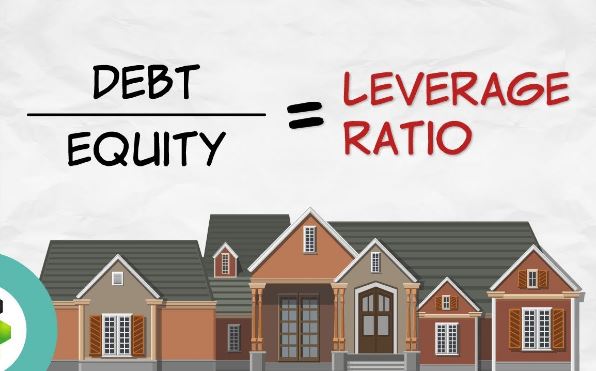Leverage Ratios
The leverage ratios used to determine the companies’ financing methods, or the ability to meet the obligations. There are many ratios to calculate leverage but the important factors include debt, interest expenses, equity, and assets.
The most important leverage ratio is the debt to equity ratio that gives you an idea about the debt one company is in and the equity it has at its disposal. Leverage ratios also determine the company’s cost mix and its effects on the operating income. Companies with high fixed costs earn more income because after the break-even point, with the increase in output the income increases as the cost has already been incurred. On the other hand, a company with higher variable cost seems to earn little operating income because with the increase in output the variable cost increases too.
It can also be said that leverage ratios tend to find the debt a company has on its balance sheet or its financial health. For a shareholder the first claim he has is against the company’s assets, therefore a company might not be left with nothing in the phase of bankruptcy after satisfying the debt holders besides the assets. The most well-known debt to equity ratio determines the risk that a company is in if it has taken tones of death. For example, a company has a 10 Lakhs debt and its equity is 20 Lakhs, the debt to equity ratio will be 0.5. Companies with less debt-equity ratio are less risky than the companies having a high ratio. It is important for a shareholder to look at the financial ratios in order to invest in it. The formula for debt to equity ratio is:
Debt/Equity=(Short term debt + Long term debt)/Equity
Another important ratio is the interest coverage ratio that determines the interest payment ability of the company against the debt it owes. The interest payment is made from the company’s profit that it earns with the primary business it does. The formula for it is:
Interest Coverage = Operating Income / Interest Expenses
These leverage ratios are very important for the company’s internal users as well as external users. These ratios help identify the weak areas of the company internally and help the shareholders make a judgment about their investments.
List of common leverage ratios:
There are several different leverage ratios that may be considered by market analysts, investors, or lenders. Some accounts that are considered to have significant comparability to debt are total assets, total equity, operating expenses, and incomes.
Below are 5 of the most commonly used leverage ratios:
Debt-to-Assets Ratio = Total Debt / Total Assets
Debt-to-Equity Ratio = Total Debt / Total Equity
Debt-to-Capital Ratio = Today Debt / (Total Debt + Total Equity)
Debt-to-EBITDA Ratio = Total Debt / Earnings Before Interest Taxes Depreciation & Amortization (EBITDA)
Asset-to-Equity Ratio = Total Assets / Total Equity




